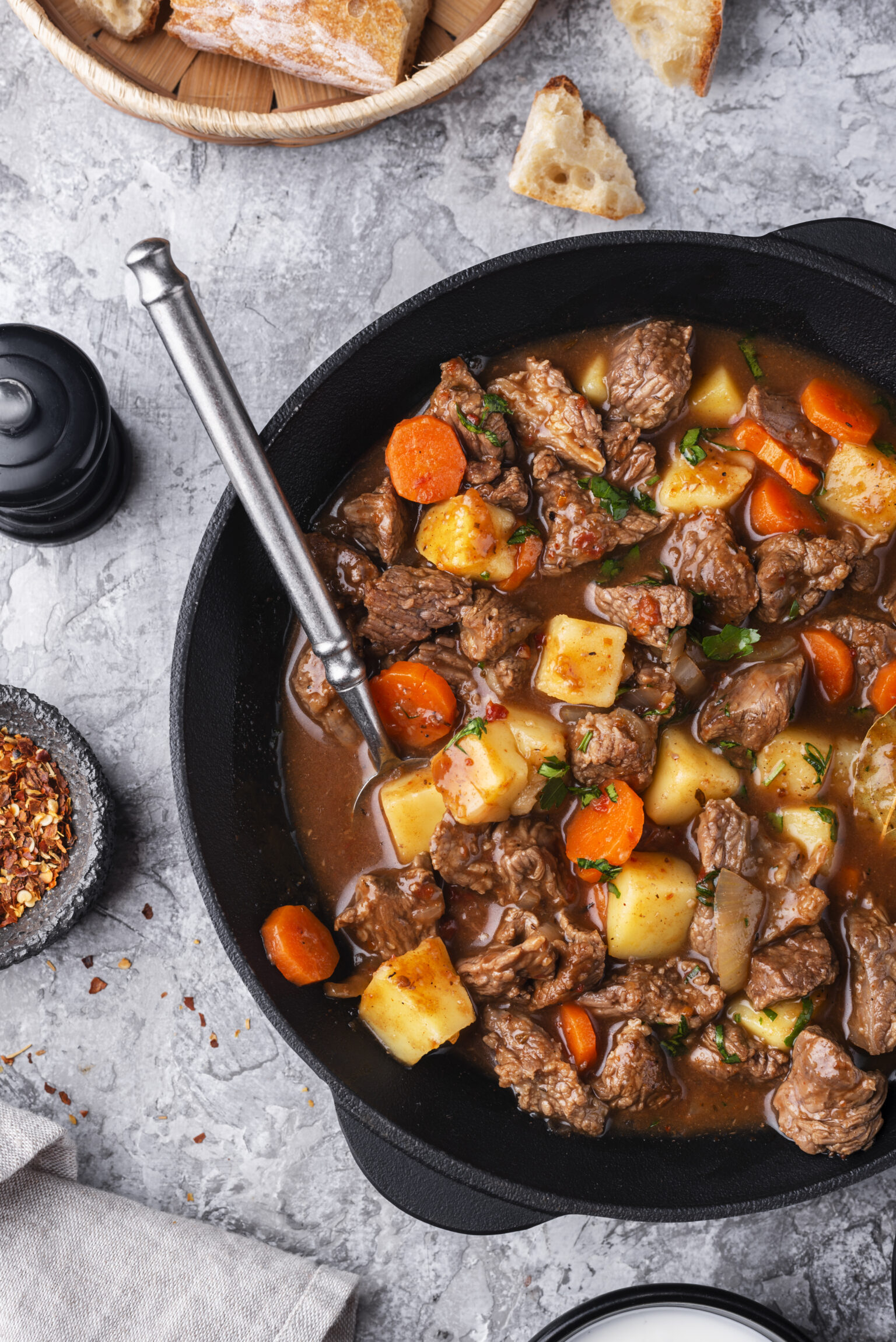In the realm of South African cuisine, few dishes capture the essence of tradition and communal cooking quite like potjiekos. This beloved dish, which translates to “small pot food,” combines a rich medley of ingredients slow-cooked in a cast-iron pot over an open fire. With its roots deeply embedded in South African history and culture, potjiekos brings people together to savor the flavors of slow-cooked goodness. In this article, we explore the origins, cooking techniques, and the communal spirit behind this traditional South African dish.
- The Origins of Potjiekos:
Potjiekos has its origins in the Dutch settlers’ culinary traditions and was influenced by the Voortrekkers who migrated across the South African plains during the 19th century. As they embarked on their journeys, they used cast-iron pots called “potjie” to prepare meals along the way. Over time, this cooking style evolved into potjiekos, a dish that celebrates the communal spirit of sharing food and stories around a fire.
- Cooking Techniques:
Potjiekos is not just a dish; it is a culinary experience that combines slow cooking, layering of flavors, and the art of patience. Here are the key cooking techniques involved in making potjiekos:
a. Cast-Iron Pot: The iconic cast-iron pot, or potjie, is an essential element of potjiekos. Its thick walls distribute heat evenly, allowing for slow and steady cooking. The rounded shape of the pot promotes the circulation of flavors and encourages the ingredients to cook in their own juices.
b. Layering of Ingredients: One of the unique aspects of potjiekos is the layering of ingredients. The dish typically starts with a layer of meat at the bottom, followed by a variety of vegetables, herbs, and spices. This layering technique allows the flavors to meld together as they slowly simmer, resulting in a harmonious blend of tastes.
c. Slow Cooking: Potjiekos is all about embracing the slow cooking process. The pot is placed over an open fire or on a stove on low heat, allowing the ingredients to simmer and develop rich flavors over an extended period. This gentle cooking method tenderizes the meat and allows the flavors to meld together, resulting in a hearty and flavorful dish.
d. Minimal Stirring: Unlike many other cooking techniques, potjiekos calls for minimal stirring. The layers of ingredients are carefully arranged, and the pot is left undisturbed to allow the flavors to blend naturally. This technique preserves the integrity of the individual ingredients and enhances the overall taste.
- The Communal Spirit:
Potjiekos is more than just a dish; it embodies the spirit of togetherness and communal cooking. It is often prepared in outdoor settings, where friends and family gather around the fire, sharing stories and laughter while the potjiekos simmers. The slow cooking process provides ample time for bonding and enjoying the company of loved ones, making potjiekos a true celebration of community and tradition.
- Popular Variations:
Potjiekos offers endless possibilities for creativity and adaptation. While there are classic recipes, each cook can put their own twist on the dish, incorporating favorite ingredients and personal preferences. Popular variations include lamb or beef potjiekos, chicken potjiekos, and vegetarian options that showcase an assortment of seasonal vegetables and legumes.
Potjiekos represents the heart and soul of South African culinary heritage. From its humble origins to the communal cooking techniques, this traditional dish brings people together, nourishing both body and spirit. Whether enjoyed in a backyard gathering or at a social event, potjiekos serves as a reminder of the importance of sharing meals, stories, and laughter. So, gather around the fire, embrace the slow cooking process, and savor the rich flavors of potjiekos as you create lasting memories with loved ones.








